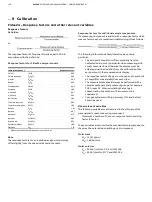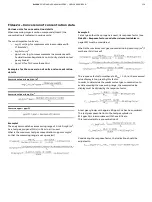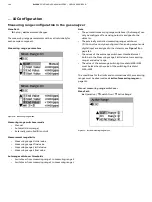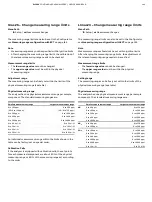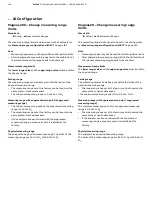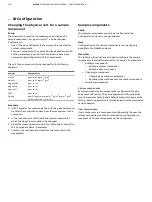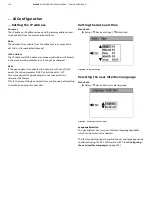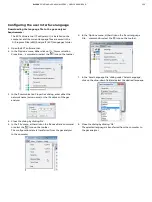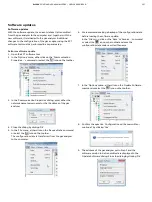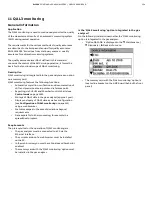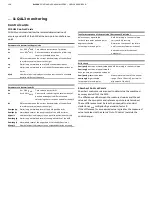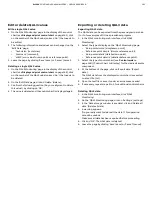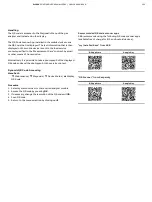
152
EL3000
CONTINUOUS GAS ANALYZERS | OI/EL3000-EN REV. D
… 10 Configuration
… Sample components
Changing a Component
Note
A component that is activated for calibration cannot be
changed.
Changing a component parameter
1. In ECT in the tree structure, left-click the component for
which the parameters should be changed.
2. Change the desired parameters.
Note
The molar mass, response factor, C-atom count and K factor
parameters cannot be changed for a system component.
Replace one component with another component
1. In ECT in the tree structure, right-click the component
that should be replaced.
2. Select a component in the component selection list and
left-click it with mouse to transfer it to the tree structure.
3. Check and change the parameters as needed.
4. Check the measuring range and configure if necessary.
Deleting a component
Note
A component that is activated for calibration cannot be deleted.
A (system or user) component can be deleted from the tree
structure. After deletion, the component is no longer available
for display or calibration; however, it is still included in the
component selection list and can be added to the component
list again later on.
1. In ECT in the tree structure, right-click the component that
should be deleted.
2. In the component selection list, left-click the ‘Delete Entry’
entry.
3. The ‘Free Component’ entry is displayed in the tree structure
instead of the deleted component.
Completing the configuration
When the configuration is completed, the configuration data
must be transferred from ECT to the gas analyzer using the
‘Send Data’ command.
Configuring signal inputs and outputs
Setup
The signal inputs and outputs (I/O connections) can only be
configured in the Configurator and not on the gas analyzer.
Function
Assignments for the following are configured
• the analog outputs (AOs),
• the digital outputs (DOs) and
• the digital inputs (DIs).
Assignment
Figure 83: ‘I/O Connections’ menu
Only one function can be assigned to each signal input or
output. A function can be assigned to several signal inputs or
outputs. Multiple external status signals can be configured
depending on the number of free digital inputs.

